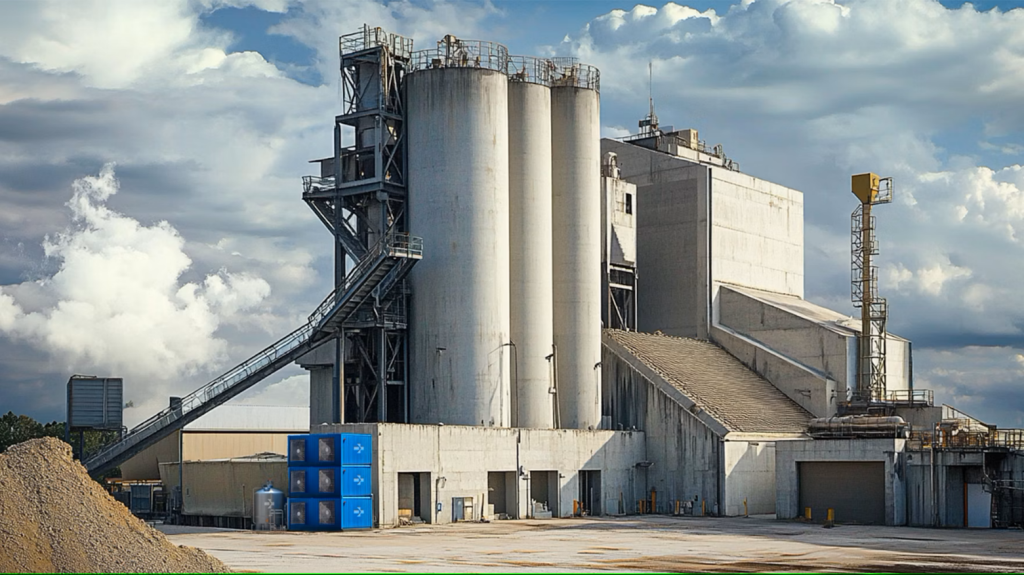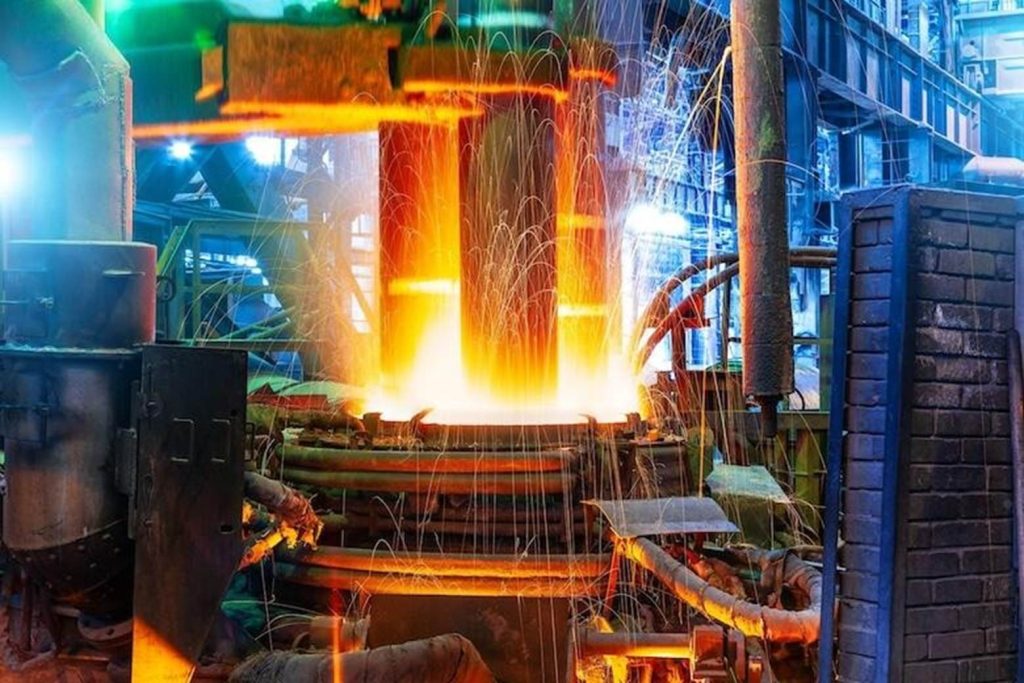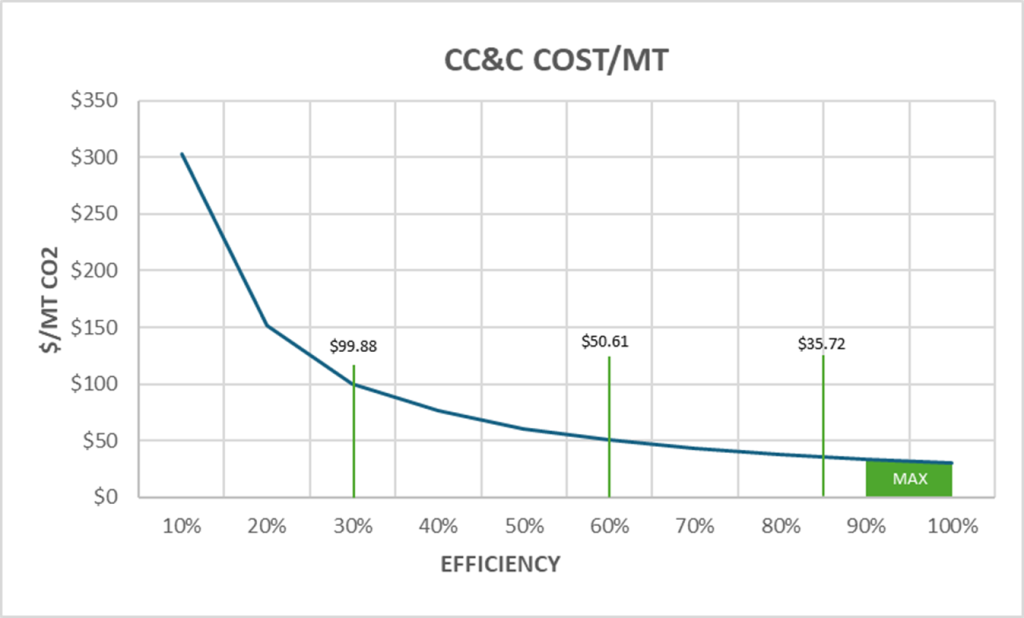CO₂ in Construction
The Future of Carbon-Negative Cement and Steel
Construction shapes societies, creating infrastructure that supports our daily lives. Yet, the industry significantly contributes to global greenhouse gas emissions. Cement and steel production alone account for approximately 15% of global CO₂ emissions. Cement production is responsible for around 8%, and steel about 7%. With climate urgency intensifying, the pressure on construction to rapidly and sustainably decarbonize has never been greater.
An innovative approach gaining traction involves integrating captured CO₂ directly into construction materials. This method doesn’t merely reduce emissions, it transforms cement and steel into carbon-negative materials. Captured CO₂ becomes a valuable commodity rather than an environmental liability.
Cementing Sustainability

Traditional concrete production is carbon-intensive, primarily due to cement manufacturing. Ordinary Portland Cement production involves heating limestone at high temperatures, releasing significant CO₂. Innovative companies like CarbonCure Technologies are pioneering a method called CO₂ mineralization. CarbonCure injects captured CO₂ into wet concrete, chemically binding it within the material. This approach permanently stores CO₂ and enhances concrete strength and durability. To date, CarbonCure’s technology has prevented hundreds of thousands of metric tons of CO₂ emissions globally.
Thomas Concrete, a major industry player, already utilizes CarbonCure’s technology commercially across the United States. Adopting these carbon-negative technologies positions firms to benefit from emerging carbon credit markets, regulatory compliance, and sustainability-focused competitive advantages.
Forging a Sustainable Steel

The steel industry faces similar sustainability challenges. Conventional steelmaking relies heavily on coal-based blast furnaces, generating substantial CO₂ emissions. Newer methods significantly reduce these emissions by incorporating captured CO₂ into steel production processes.
Direct Reduced Iron (DRI) technology, particularly hydrogen-based DRI, combined with supplemental captured CO₂, offers substantial emissions reductions. Sweden’s HYBRIT initiative has demonstrated potential CO₂ reductions up to 90% compared to traditional steelmaking. While HYBRIT primarily uses hydrogen, captured CO₂ integration could further enhance sustainability outcomes.
Early adoption of these technologies offers substantial operational cost savings, improved product quality, and strategic positioning in an increasingly decarbonization-focused regulatory environment. Regions like Europe and North America actively support low-carbon steel initiatives through substantial funding, subsidies, and favorable regulatory frameworks.
Lab-Scale Evidence and Real-World Potential
At CC&C, our lab-scale tests validate the feasibility of integrating captured CO₂ into cement and steel production at significantly lower costs compared to traditional methods, achieving less than $100 per metric ton. Our modular, compact carbon capture systems demonstrate the feasibility CO₂ capture efficiencies up to 85%, considerably outperforming conventional methods in both energy use and scalability. Furthermore, our technology achieves energy consumption below 100 kWh per metric ton, compared to traditional systems requiring significantly higher energy inputs (often 1000+ kWh per metric ton). These results are derived from CC&C’s internal lab-scale validations (2024).
These lab-proven metrics, however, highlight the need for careful consideration when transitioning to commercial-scale operations. Broader adoption may require overcoming infrastructure integration challenges, ensuring regulatory compliance at scale, and validating long-term system durability under industrial operating conditions.
CC&C’s Unique Value Proposition

While solutions like CarbonCure and HYBRIT have paved the way, CC&C differentiates itself by focusing on compact and modular carbon capture systems specifically designed for urban and industrial environments. Our proprietary AI-driven optimization enhances system performance by continually adjusting efficiency, predicting maintenance needs, and reducing operational costs. Crucially, CC&C’s technology achieves economic viability without the extensive infrastructure and long lead times typical of traditional methods. Minimal site preparation allows our units to be operational within weeks rather than years, enabling rapid deployment and immediate environmental impact. This unique blend of adaptability, affordability, and deployment speed positions CC&C as a valuable partner to existing solutions and a distinct leader in modular carbon capture technology.
Market Trends and Regulatory Incentives
Influential global trends accelerate captured CO₂ integration in construction. Regulatory frameworks worldwide increasingly pressure industries to adopt lower-carbon practices. Financial incentives – such as carbon trading systems, subsidies, and tax credits (e.g., U.S. Section 45Q) – actively encourage captured CO₂ adoption.
Consumer demand for sustainable building materials continues to grow, driven by green building certifications (LEED, BREEAM, WELL) increasingly rewarding projects using low-emission or carbon-negative materials. MarketsandMarkets projects the CO₂ utilization market will grow from $3.1 billion in 2022 to $12.9 billion by 2030, driven by high emissions intensity and widespread infrastructure applications in cement and steel sectors. Similarly, Fairfield Market Research projects the market to reach approximately $9.9 billion by 2030, with a CAGR of 14.3%. Cement and steel sectors will form a substantial part of this growth, given their high emissions intensity and wide-ranging application in infrastructure and construction projects.
Addressing Adoption Challenges Transparently
Despite clear benefits, adopting CO₂-utilizing technologies presents several challenges, such as integrating new systems into existing infrastructure, addressing upfront investment costs, and navigating evolving regulatory requirements. CC&C directly addresses these hurdles through its modular, scalable carbon capture solutions designed explicitly for minimal site disruption, accelerated permitting processes, and significantly lower initial capital requirements compared to traditional systems.
Moreover, CC&C leverages proprietary AI-driven analytics to optimize operations, reduce long-term costs, and streamline compliance with regional and international regulatory standards. To fully realize widespread commercial adoption, CC&C recognizes the necessity of rigorous validation. This includes near-term deployment of full-scale pilot projects and actively engaging strategic partnerships across key industries – cement, steel, and Enhanced Oil Recovery (EOR) – to conclusively demonstrate long-term economic feasibility and measurable environmental benefits.
By transparently confronting these challenges head-on, CC&C is committed to providing clear evidence and actionable pathways to accelerate industry adoption.
Building the Future, Sustainably
Integrating captured CO₂ into construction materials is economically viable, strategically beneficial, and environmentally essential. CC&C’s lab-scale validations have demonstrated substantial emission reductions, achieving efficiencies up to 85% at costs under $100 per metric ton, making meaningful climate impact achievable now.
In regions strongly committed to global climate leadership, adopting carbon-negative solutions positions industry leaders to achieve ambitious sustainability targets and ensures alignment with tightening regulatory frameworks. Simultaneously, in regions prioritizing energy independence, economic vitality, and infrastructure growth, innovative CO₂ utilization technologies offer pragmatic solutions that enhance efficiency, reduce long-term costs, and strengthen competitiveness without imposing heavy regulatory burdens.
Rather than framing these approaches as mutually exclusive, CC&C’s technology bridges these perspectives, delivering both environmental responsibility and economic practicality to diverse markets. Across diverse political and economic landscapes, CC&C’s innovative approach offers a clear, pragmatic path forward, uniting economic resilience, strategic advantage, and responsible environmental stewardship.
The opportunity is clear: Leaders who act today will shape stronger, cleaner, and more competitive industries and communities for generations to come.
It’s Time to Lead!
We invite industry leaders, sustainability advocates, investors, and partners to explore opportunities with CC&C’s carbon-negative cement and steel technologies. Connect with our team to discuss pilot projects, industry-specific applications, or schedule a direct consultation.
Lead the transition. Build smarter, cleaner, and more competitive industries today.
Safe Harbor Statement:
This article contains forward-looking statements regarding CC&C’s technologies and anticipated impacts. Actual results may differ due to technological advancements, market conditions, and regulatory developments. CC&C assumes no obligation to update these statements as new information becomes available.
